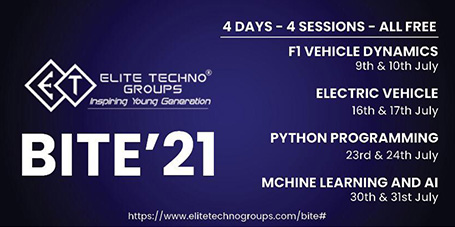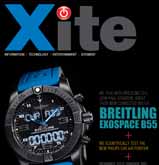|
|
Review of telecom gear source code highly questionable: Ericsson to India
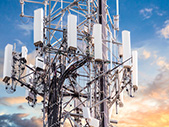 A network can be compromised through weaknesses in deployment or configuration and operations, which software-related tests are not aimed to address, said Ericsson CTO.
A network can be compromised through weaknesses in deployment or configuration and operations, which software-related tests are not aimed to address, said Ericsson CTO.
Swedish telecom equipment maker Ericsson told the Indian government that the outcome of source code review would be questionable and it was virtually not possible to bring out the software free from known vulnerabilities.
In a two-page letter to Secretary of the Department of Telecommunications (DoT), dated June 11, seen by ETTelecom, Ericsson's Chief Technology Officer (CTO), Erik Ekudden said, "it is highly questionable if a review of the source code is meaningful, depending on the purpose," and added that if the purpose was to verify the supplier’s software, it would be virtually an impossible task.
Stockholm-based executive further said that it was in fact virtually not possible to produce software that is free of all known vulnerabilities. "A network can be compromised through weaknesses in deployment or configuration and operations, which software-related tests are not aimed to address," Ekudden added.
The letter from multinational telecom giant has come on the back of India's much-anticipated move seeking source code of every network equipment deployed in the country as a part of the security assurance testing initiative.
"Certifying software or hardware does not mean it is flawless. Un-noticed imperfections of testing lead to a false sense of security," the top executive said.
“Certifying software or hardware does not mean it is flawless. Un-noticed imperfections of testing lead to a false sense of security.Erik Ekudden, Ericsson Global CTO”
Query to Ericsson did not elicit any response.
Citing disadvantages, Ekudden said that scanning source code requires Ericsson specific and domain-specific knowledge and understanding, and added that a meaningful review would take substantial time and effort and could be best performed by a team that has a good and thorough knowledge of the specific source code.
Meanwhile, the Cellular Operators Association of India (COAI) that represents incumbent telcos such as Bharti Airtel and Reliance Jio, has maintained that the source code was never sought by the telecom department's security testing arm in the past.
"This source code requirement has come up recently in the last two months. The discussions with DoT on Indian Telecom Security Assurance requirements (ITSAR) have been ongoing for over a year and the requirement to submit the source code was never raised earlier by the security testing team of the department," the group told DoT.
Last year, the United Kingdom had set up a test centre in order to screen source codes aimed to protect next-generation telecom networks following backdoor concerns surrounding Chinese gear maker Huawei Technologies.
However, the India unit of Chinese firm said that it was open to providing source code to the Indian authorities after a similar proposal was made by the company's founder Ren Zhengfei to a potential US-based company for manufacturing and deployments.
The current best practice in the industry is to conduct comprehensive risk assessments based on the categorisation of the severity of potential security vulnerabilities, the Swedish company said, and believes that any critical security vulnerabilities that might compromise customers’ networks could be addressed before releasing any commercial software.
Last year, the Steering Committee chairman of India's high-level 5G panel A. Paulraj said that the telecom network technology from European gear makers may be as unsafe, or safe, as their Chinese rivals, including Huawei, and that only locally-produced technology can ensure complete infrastructure safety.
India's telecom equipment market is dominated by Finnish Nokia, Swedish Ericsson and Chinese Huawei.
In 2010, a similar security condition was initially imposed on multinational original equipment makers but later it was relaxed after the industry-wide consultation. (Source: ETTelecom)
|
Anritsu Expands High-frequency Components Line
to Address Emerging High-speed Design Test Requirements
 New 110 GHz W1 Components Extend Anritsu’s Portfolio and Help Create Test Environments to More Accurately Verify mmWave and Optical Designs. Anritsu Company expands its W1 (1.0 mm) component line with the introduction of bias tees, DC block, and semi-rigid cables that operate to 110 GHz and provide broadband frequency scalability in high-frequency device characterization and optical networking applications.
New 110 GHz W1 Components Extend Anritsu’s Portfolio and Help Create Test Environments to More Accurately Verify mmWave and Optical Designs. Anritsu Company expands its W1 (1.0 mm) component line with the introduction of bias tees, DC block, and semi-rigid cables that operate to 110 GHz and provide broadband frequency scalability in high-frequency device characterization and optical networking applications.
The addition of the new W1 components provides Anritsu with the broadest millimeter wave (mmWave) coaxial component portfolio in the market, and they can be integrated in test systems so engineers have greater confidence in their emerging high-speed designs.
W1 Components Support High Frequencies
Anritsu’s component technology leadership in mmWave frequencies is re-enforced with the introduction of the W1 components. No other company has a more complete set of 110 GHz components for frequency and time domain use.
With operable frequency of DC to 110 GHz, the new W1 components generate metrology-grade quality results with high repeatability. Further ensuring flexibility for customer testing, these new components provide a component solution where conventional devices, including waveguide, do not exist. The W1 coaxial interface allows for a direct connection to the instrument test port, which saves time and simplifies system setup.
The new components can be used as part of a test system consisting of 110 GHz vector network analyzers (VNAs), oscilloscopes and Bit Error Rate Testers (BERTs), as well as for optical transceivers, laser diodes, photodiodes and optical modulators. Development of switches and routers using NRZ and PAM4 modulation schemes with 56 Gbps and 112 Gbps data rates, and 800G technology are applications, as well. (Source: Convergence Plus)
|
Mark Zuckerberg loses $7 billion as firms boycott Facebook ads
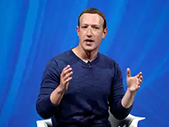 Mark Zuckerberg just became $7.2 billion poorer after a flurry of companies pulled advertising from Facebook Inc.’s network. Mark Zuckerberg just became $7.2 billion poorer after a flurry of companies pulled advertising from Facebook Inc.’s network. Shares of the social media company fell 8.3% on Friday, the most in three months, after Unilever, one of the world’s largest advertisers, joined other brands in boycotting ads on the social network. Unilever said it would stop spending money with Facebook’s properties this year.
Mark Zuckerberg just became $7.2 billion poorer after a flurry of companies pulled advertising from Facebook Inc.’s network. Mark Zuckerberg just became $7.2 billion poorer after a flurry of companies pulled advertising from Facebook Inc.’s network. Shares of the social media company fell 8.3% on Friday, the most in three months, after Unilever, one of the world’s largest advertisers, joined other brands in boycotting ads on the social network. Unilever said it would stop spending money with Facebook’s properties this year.
The share-price drop eliminated $56 billion from Facebook’s market value and pushed Zuckerberg’s net worth down to $82.3 billion, according to the Bloomberg Billionaires Index. That also moved the Facebook chief executive officer down one notch to fourth place, overtaken by Louis Vuitton boss Bernard Arnault, who was elevated to one of the world’s three richest people along with Jeff Bezos and Bill Gates.
Companies from Verizon Communications Inc. to Hershey Co. have also stopped social media ads after critics said that Facebook has failed to sufficiently police hate speech and disinformation on the platform. Coca-Cola Co. said it would pause all paid advertising on all social media platforms for at least 30 days.
Zuckerberg responded Friday to the growing criticism about misinformation on the site, announcing the company would label all voting-related posts with a link encouraging users to look at its new voter information hub. Facebook also expanded its definition of prohibited hate speech, adding a clause saying no ads will be allowed if they label another demographic as dangerous. "There are no exceptions for politicians in any of the policies I’m announcing here today," Zuckerberg said. (Source: Economic Times)
|
Huawei controversy opens field for 5G challengers
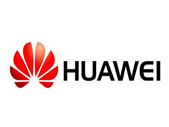 Washington has pushed allies to bar Huawei, a Chinese telecom giant, from building next-generation 5G mobile networks, claiming its equipment can be used to spy for Beijing. Huawei denies the charges, but US pressure has prompted an about-turn in Britain. Washington has pushed allies to bar Huawei, a Chinese telecom giant, from building next-generation 5G mobile networks, claiming its equipment can be used to spy for Beijing. Huawei denies the charges, but US pressure has prompted an about-turn in Britain.
With growing pressure to keep China's Huawei out of 5G network development, it could be time for firms like Japan's NEC and South Korea's Samsung to shine.
Washington has pushed allies to bar Huawei, a Chinese telecom giant, from building next-generation 5G mobile networks, claiming its equipment can be used to spy for Beijing.
Huawei denies the charges, but US pressure has prompted an about-turn in Britain.
The government had already pledged to cut the firm out of the most sensitive "core" elements of 5G that access personal data, and is now reportedly pushing for plans to end Huawei's involvement in Britain's 5G infrastructure by 2023.
But excluding Huawei is not without challenges, because there are currently only two alternatives in Europe for 5G equipment such as antennas and relay masts: Finland's Nokia and Sweden's Ericsson.
Britain has encouraged Washington to form a club of 10 democratic nations that could develop its own 5G technology, but there has been little movement so far.
"The vast majority of the commercial networks sold in the world come from the big three," said Sylvain Chevallier, in charge of telecoms at BearingPoint consultancy, referring to Huawei, Nokia and Ericsson.
"But a world of three is not good for operators, and if it goes down to two it will be worse still," he told AFP.
- Teaming up - That leaves a tempting potential opening for telecoms firms like Samsung and NEC. But building a successful 5G network is no simple task.
That is a lesson Samsung has already learned. Despite being a major player in 3G, it found itself unable to compete with the big three on 4G and struggled to win commercial contracts.
"This has been a challenge for Samsung," said Daryl Schoolar, a mobile technology specialist at consulting group Omdia.
In building its 5G network, Samsung has so far focused on North America and parts of the Asia-Pacific region.
"So while operators may feel uncertain about Samsung Networks, they are much further along in the process of being a global presence than NEC," Schoolar added.
NEC does have some advantages, including a partnership in Japan with mobile operator Rakuten.
The firms have already cooperated on a 4G network and are now jointly developing a 5G system.
The Japanese firm is also a leader on undersea cables, fibre optic networks and -- thanks to its affiliate Netcracker -- logistics management software.
"Netcracker has a strong presence with operators in Europe, which could be a real entry point for NEC," said Stephane Teral, chief telecoms analyst at LightCounting, a market research firm.
- 'A major challenge' - NEC is tightlipped about its contracts for mobile networks, saying only that it is holding feasibility demonstrations for "a number of customers and we are engaged in commercial discussions with others".
Britain's government has reportedly asked both NEC and Samsung to take part in demonstrations as it looks to diversify its 5G options.
And on Thursday, NEC announced a tie-up with Japanese operator NTT intended in part to speed up the development of a 5G network.
Samsung and NEC joined forces two years ago and have launched a joint marketing team to offer 5G products to European and Asian markets.
Still, the path ahead will be tough, said Schoolar.
"I think it's a major challenge for NEC. It requires more than radios, it requires investing in people who can do system integration, sales, customer support, network design and engineering," he said.
"Plus NEC will need to build operator trust that they will be there to support them in five to 10 years as those 5G networks evolve."
Washington has backed the use of non-proprietary technology like Open RAN in 5G development, hoping it will provide an entry point for US firms.
Such a move would open up opportunities for NEC, allowing them to "create an economic model that would shake up traditional equipment manufacturers," said Chevallier. (Source: Economic Times)
|
Govt strengthens telecom connectivity in Ladakh
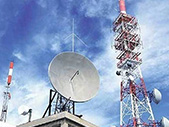 BSNL will be providing the coverage in all these areas. Although the government has not taken any decision to ban Chinese firms from telecom sector, it is working to make networks more secure going forward. BSNL will be providing the coverage in all these areas. Although the government has not taken any decision to ban Chinese firms from telecom sector, it is working to make networks more secure going forward.
Amid the stand-off with China at the border, the government has strengthened telecom connectivity in Ladakh and Jammu and Kashmir (J&K). According to sources, 87 uncovered villages in J&K and 57 in Ladakh will be provided telecom connectivity soon.
The decision was taken a few days ago as the government wants to cover the regions with 100% telecom coverage, so that the communication flow remains intact.
“Universal Service Obligation Fund (USOF) has taken an initiative to cover 354 uncovered remote villages of India. Out of these 354 villages, 144 are in J&K and Ladakh. After execution of this project, there will be 100% telephonic coverage of habitation in the two regions,” said a source.
Apart from that, 812 digital satellite phone terminals have been provisioned to cover remote territories of the country, of which 134 sites are in the Ladakh region, including the Galwan Valley and Hot Springs, DBO, D. Singh Post, Lukumg, Thakung and Chusul.
BSNL will be providing the coverage in all these areas. Although the government has not taken any decision to ban Chinese firms from telecom sector, it is working to make networks more secure going forward.
To start with, the government is considering a NITI Aayog proposal to roll out 4G network of BSNL using locally designed and manufactured products. BSNL is already providing connectivity at the border areas of J&K and Ladakh regions and at other difficult and hilly terrains of the country.
As the revenue potential is less in these areas, which are also strategically important, the government provides funding to BSNL from the USOF to set up infrastructure. (Source: Financial Express)
|
 A network can be compromised through weaknesses in deployment or configuration and operations, which software-related tests are not aimed to address, said Ericsson CTO.
A network can be compromised through weaknesses in deployment or configuration and operations, which software-related tests are not aimed to address, said Ericsson CTO.

 New 110 GHz W1 Components Extend Anritsu’s Portfolio and Help Create Test Environments to More Accurately Verify mmWave and Optical Designs. Anritsu Company expands its W1 (1.0 mm) component line with the introduction of bias tees, DC block, and semi-rigid cables that operate to 110 GHz and provide broadband frequency scalability in high-frequency device characterization and optical networking applications.
New 110 GHz W1 Components Extend Anritsu’s Portfolio and Help Create Test Environments to More Accurately Verify mmWave and Optical Designs. Anritsu Company expands its W1 (1.0 mm) component line with the introduction of bias tees, DC block, and semi-rigid cables that operate to 110 GHz and provide broadband frequency scalability in high-frequency device characterization and optical networking applications.
 Mark Zuckerberg just became $7.2 billion poorer after a flurry of companies pulled advertising from Facebook Inc.’s network. Mark Zuckerberg just became $7.2 billion poorer after a flurry of companies pulled advertising from Facebook Inc.’s network. Shares of the social media company fell 8.3% on Friday, the most in three months, after Unilever, one of the world’s largest advertisers, joined other brands in boycotting ads on the social network. Unilever said it would stop spending money with Facebook’s properties this year.
Mark Zuckerberg just became $7.2 billion poorer after a flurry of companies pulled advertising from Facebook Inc.’s network. Mark Zuckerberg just became $7.2 billion poorer after a flurry of companies pulled advertising from Facebook Inc.’s network. Shares of the social media company fell 8.3% on Friday, the most in three months, after Unilever, one of the world’s largest advertisers, joined other brands in boycotting ads on the social network. Unilever said it would stop spending money with Facebook’s properties this year.
 Washington has pushed allies to bar Huawei, a Chinese telecom giant, from building next-generation 5G mobile networks, claiming its equipment can be used to spy for Beijing. Huawei denies the charges, but US pressure has prompted an about-turn in Britain.
Washington has pushed allies to bar Huawei, a Chinese telecom giant, from building next-generation 5G mobile networks, claiming its equipment can be used to spy for Beijing. Huawei denies the charges, but US pressure has prompted an about-turn in Britain.
 BSNL will be providing the coverage in all these areas. Although the government has not taken any decision to ban Chinese firms from telecom sector, it is working to make networks more secure going forward.
BSNL will be providing the coverage in all these areas. Although the government has not taken any decision to ban Chinese firms from telecom sector, it is working to make networks more secure going forward.

